In the face of the ongoing psycho-emotional burden caused by the war and forced displacement, psychological resilience and the capacity for self-regulation are critically important, especially for people of advanced age. For this target group, who often face difficulties in verbalising traumatic experiences and are prone to the somatisation of stress, art therapy offers a safe and effective path toward psychological resourcing.
With this goal in mind, on September 12, 2025, Associate Professors of the Department of Psychology and Pedagogy, Lesia Klevaka, Viktoriia Shevchuk, and Maryna Teslenko, conducted a specialised art therapy session titled “Butterfly Wings: How to Overcome Stress and Find Peace”, oriented toward elderly internally displaced persons. The event was designed to provide participants with concrete, practical tools for managing chronic stress through nonverbal expression and somatic grounding.
The session began with an essential theoretical block, during which the facilitators explained the physiology of stress in detail. Participants learned that tension and anxiety are physiological reactions of the body, linked to the activation of the sympathetic nervous system and the release of hormones (adrenaline and cortisol). This understanding – why the body reacts in this specific way – became the first step toward conscious self-regulation, allowing participants to stop blaming themselves for their state and instead seek ways to restore internal balance. Particular emphasis was placed on simple methods that can be integrated into daily life to combat anxiety.
The key psychotherapeutic element of the meeting was the “Butterfly Wings” exercise, a bilateral stimulation technique widely used in trauma therapy (often called the Butterfly Hug). This self-soothing technique, involving rhythmic arm movements, helps reduce anxiety and stabilise emotional state, effectively interrupting the flow of anxious thoughts.
To visually confirm the therapeutic effect, participants underwent a short diagnostic test using a portable neuro-controller before and after the exercise. This examination revealed fundamental changes in internal tension, thereby strengthening the elderly participants' faith in their own resources and self-help capacity.
The creative part of the session was structured as a multi-stage process of psychological release and symbolic transformation, which is the foundation of trauma-focused art therapy.
In the first stage, participants were invited to cathartically “release tension” onto paper. Using chaotic scribbling, intense zigzags, and sharp, uncontrolled lines, they were able to externalise internal chaos and suppress the aggression that accumulated during chronic stress. This act of non-verbal expression provided primary catharsis for emotions that are typically blocked or somatised.
The next stage involved consciously “rounding off” these sharp, threatening forms, transforming them into smooth, soft, and safe circles. In art therapy, sharp angles often symbolise conflict, anxiety, and traumatic impact, whereas rounding is a powerful metaphor for psychological containment and the creation of internal safe boundaries. This conscious metaphorical rounding in the drawing directly correlated with a reduction of internal tension in the psyche, teaching the brain and nervous system to transition from danger mode to calm.
The final focus was the creation of the symbolic image of a butterfly – an archetypal embodiment of lightness, inner harmony, and rebirth. In the context of trauma survival, the butterfly symbolises metamorphosis – emerging from the “cocoon” of suffering and achieving a new, more resilient state. This visual anchor served as a powerful reminder of the achieved state of calm and the newly acquired internal resources.
At the end of the session, the elderly participants shared their feelings and discussed the symbolism of their art products, allowing them to integrate the experience gained. This exchange, guided by specialists, provided additional validation for their experiences. Most noted an improvement in mood and a noticeable reduction in internal tension. This powerful therapeutic effect of creative self-expression is especially crucial for people of advanced age who often have significant difficulties verbalising traumatic experiences, enabling them to process emotional material without needing to articulate painful details.
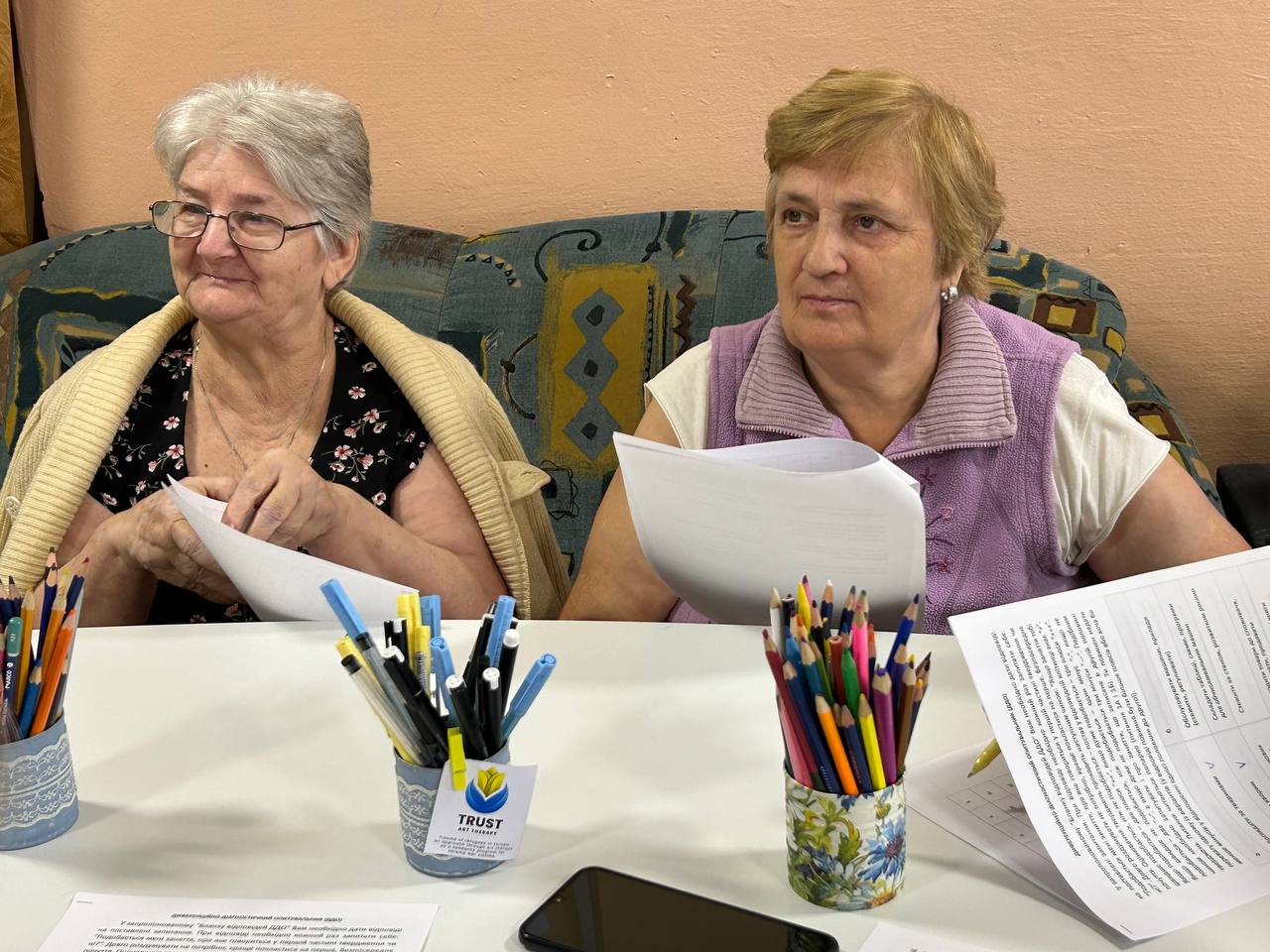
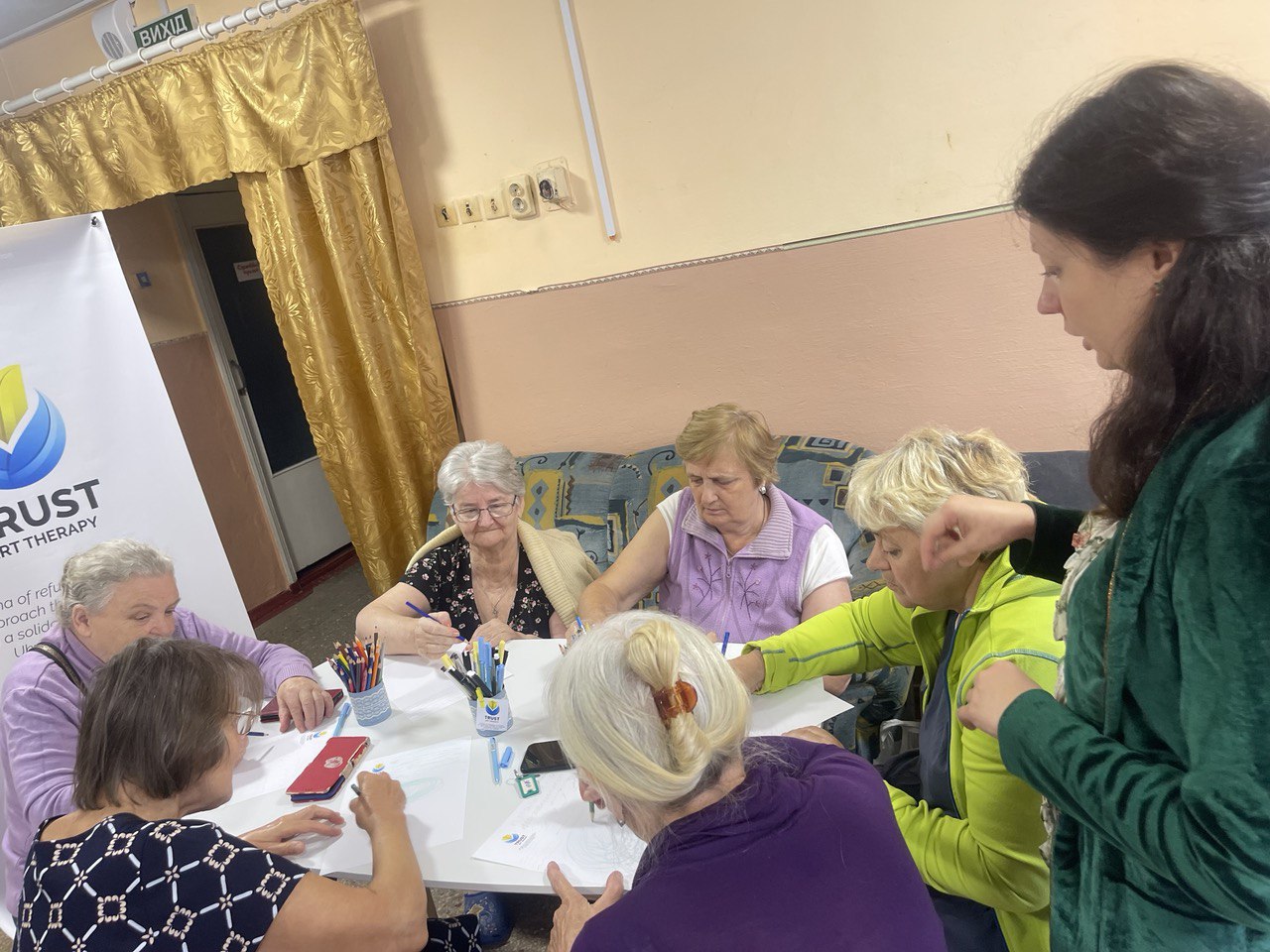
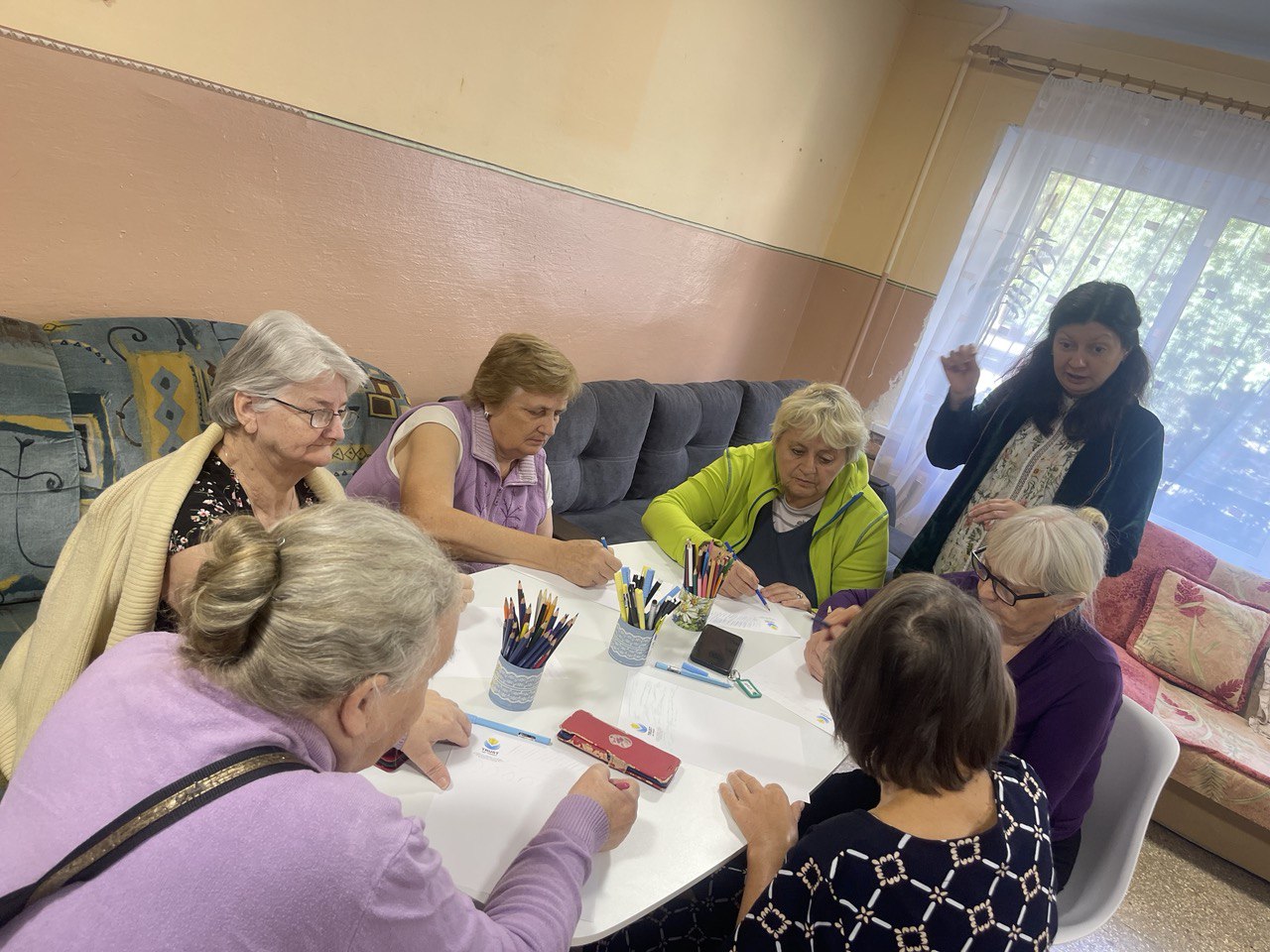
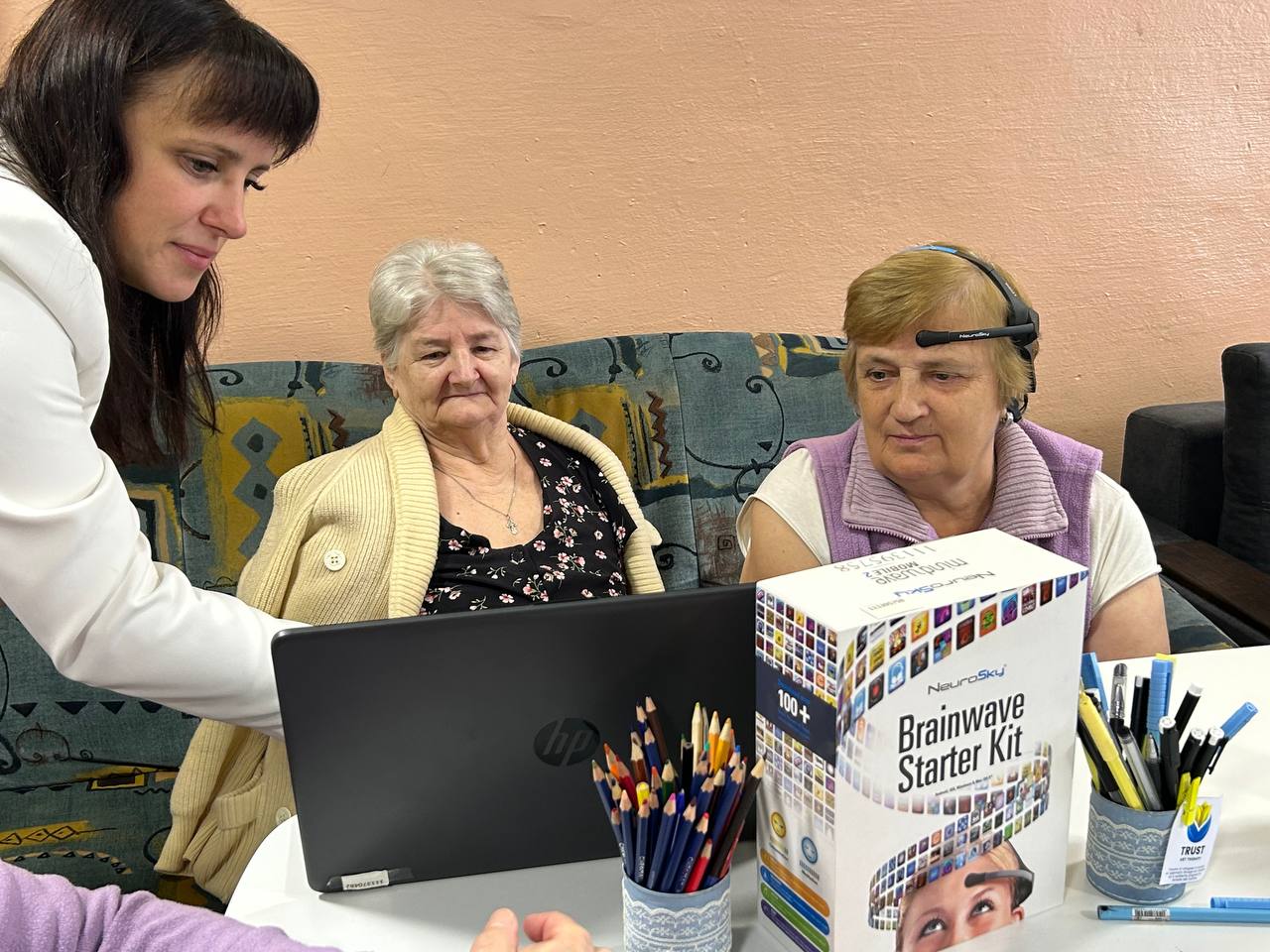
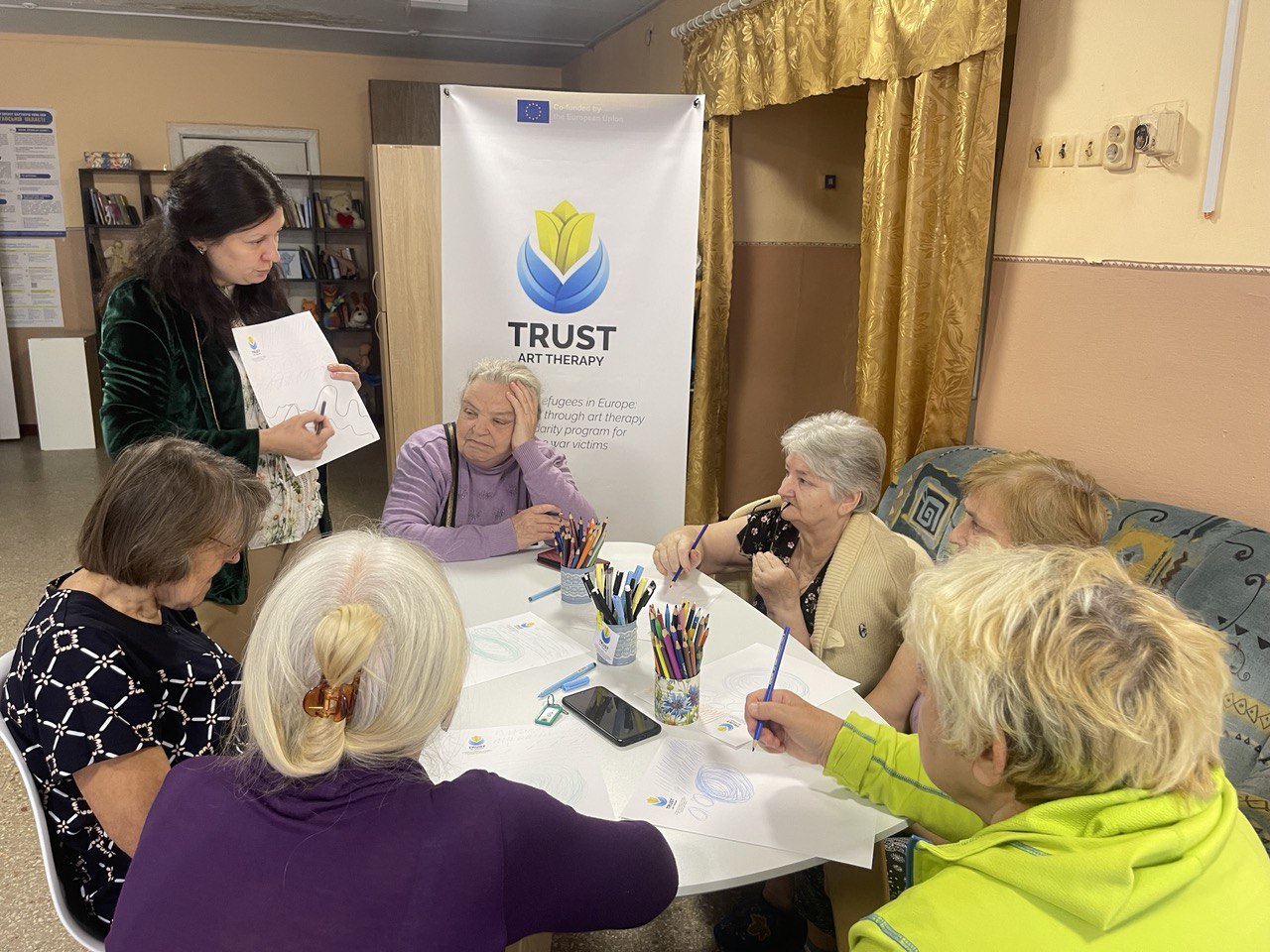
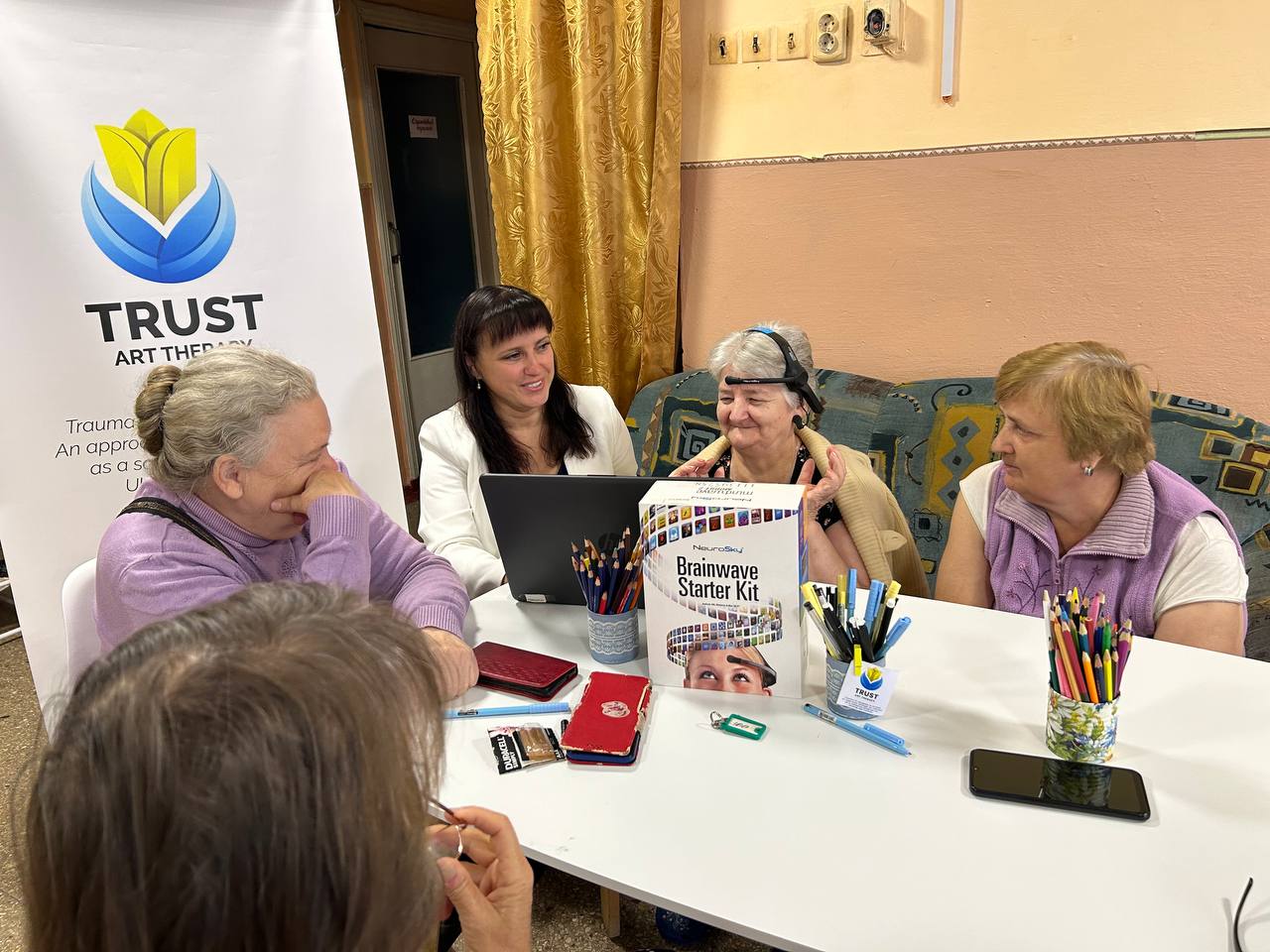
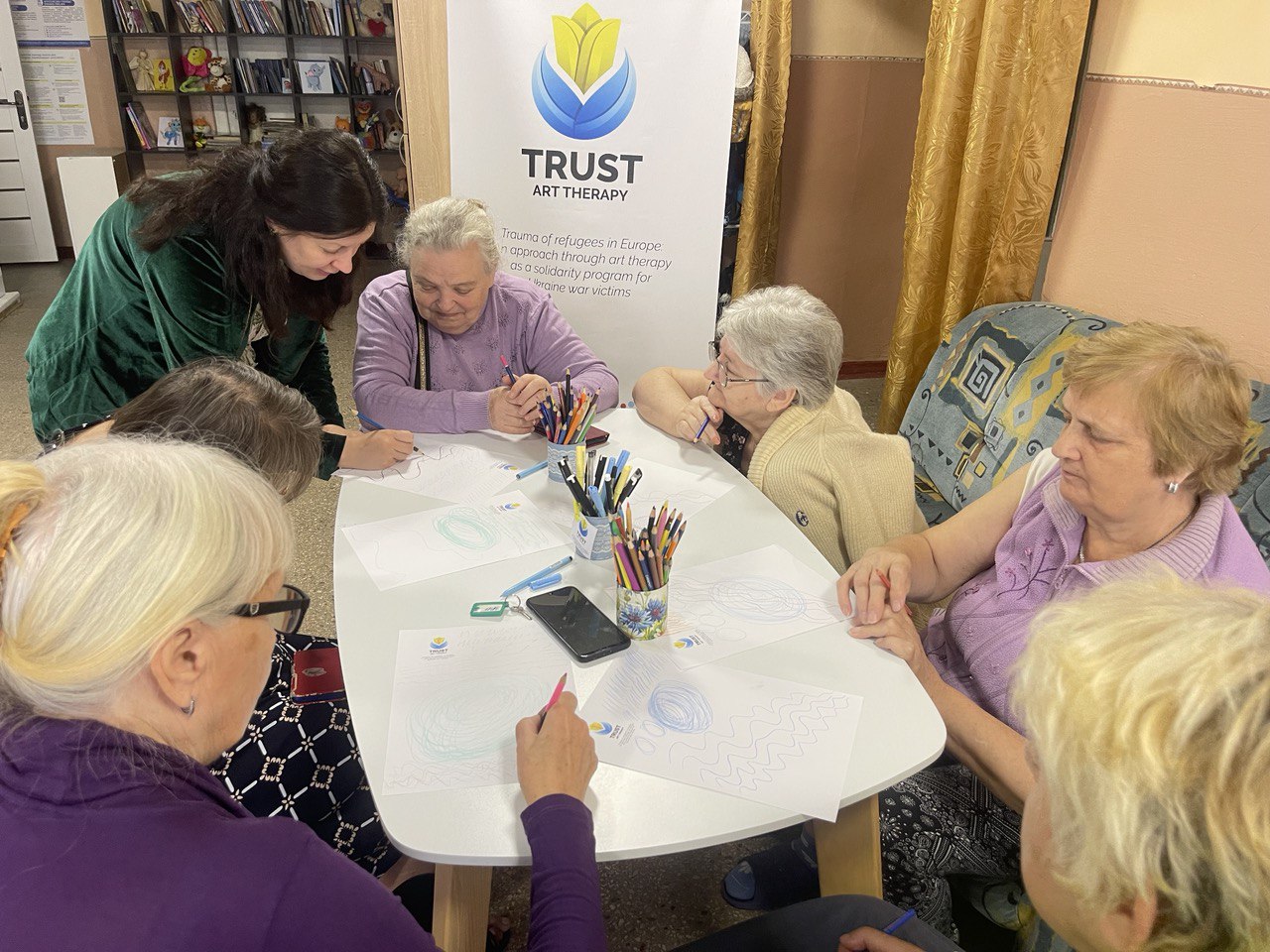

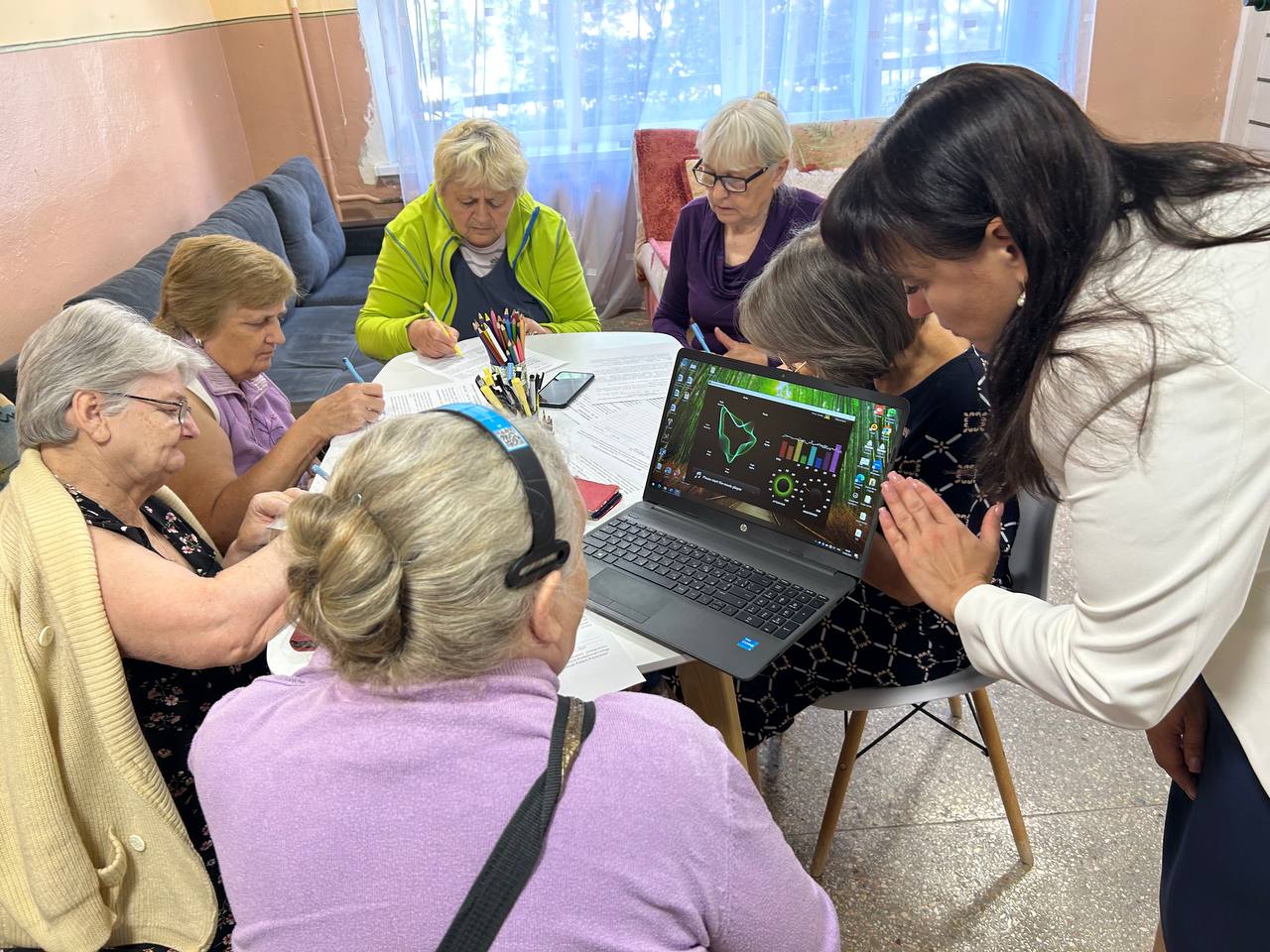
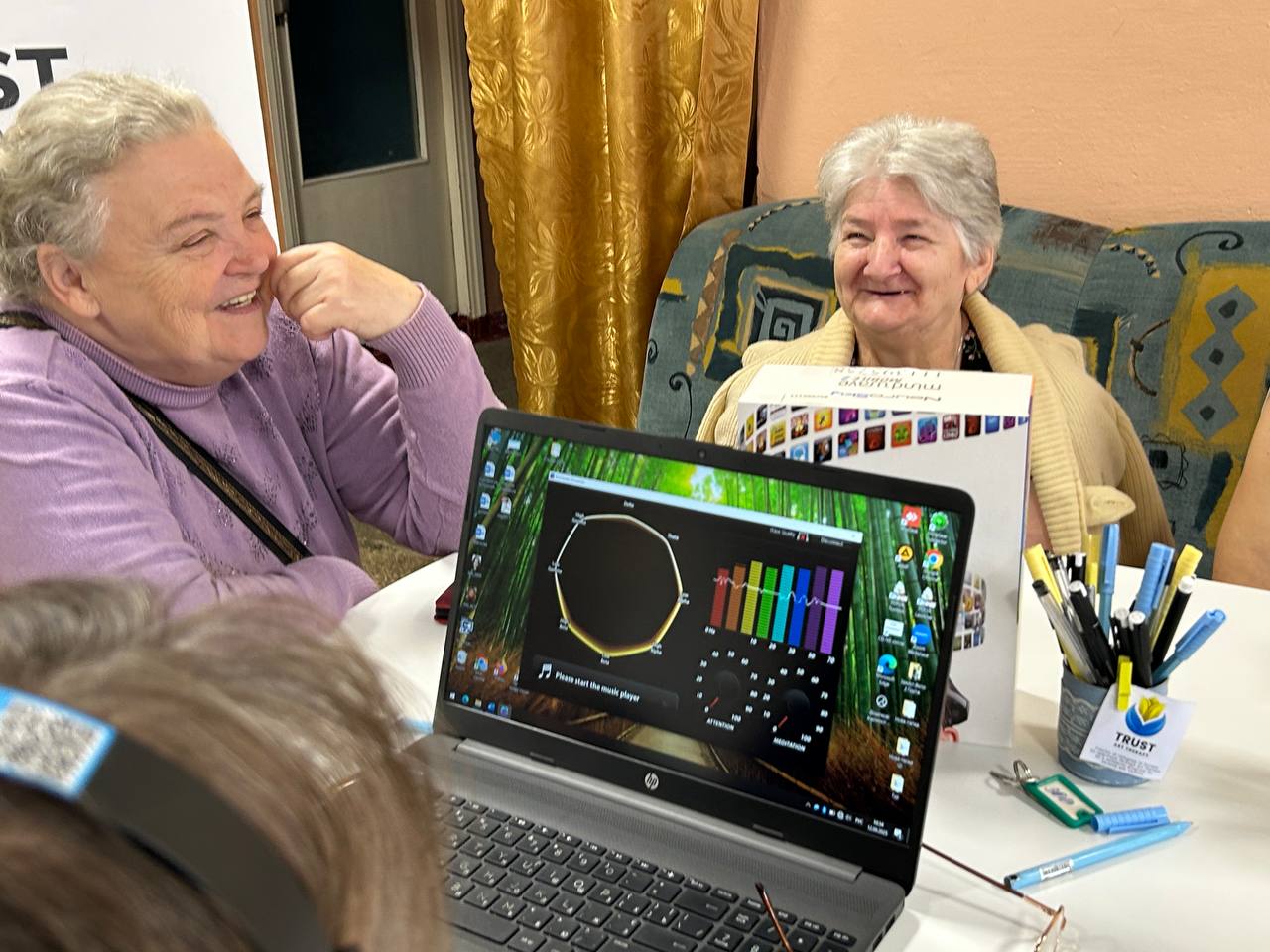
The event was held as part of the international, large-scale EU-funded Erasmus+ KA220-ADU project “TRUST” – Trauma of refugees in Europe: An approach through art therapy as a solidarity program for Ukraine war victims (Grant No. 2024-BE01-KA220-ADU-000257527).
The project title is decoded as follows:
TRUST
T – Trauma
R – Refugees
U – Ukraine
S – Solidarity
T – Therapy
The project is co-funded by the EU and led by the Centre Neuro Psychiatrique St-Martin from Belgium, in partnership with the National University “Yuri Kondratyuk Poltava Polytechnic” (Ukraine), Greek Carers Network EPIONI (Greece), Fondazione Don Luigi Di Liegro (Italy), Lekama Foundation (Luxembourg), EuroPlural Project (Portugal).
We express our sincere gratitude to our partners for their invaluable support, which makes it possible to implement such vitally important initiatives that bring the light of hope and healing to those who need it most.
It is worth noting that Poltava Polytechnic lecturers are eligible to participate in academic mobility and internship programs. Students can study abroad through Erasmus+ credit academic mobility grant programs for a semester or a full academic year at leading universities in Austria, Denmark, Estonia, Finland, Germany, Greenland, Latvia, Lithuania, the Netherlands, Norway, Poland, Portugal, Romania, Slovakia, Spain, and the Czech Republic.
For more detailed information regarding current internship, teaching, and academic mobility programs abroad, please get in touch with the International Relations Department (office 213-C, interoffice@nupp.edu.ua) or the International Relations Coordinator of the National University “Yuri Kondratyuk Poltava Polytechnic” – Ph.D. in Philology, Associate Professor of the Department of Germanic Philology and Translation, Anna Pavelieva (email: kunsite.zi@gmail.com, phone: +38-(095)-91-08-192).
Media Centre of
National University “Yuri Kondratyuk Poltava Polytechnic”



